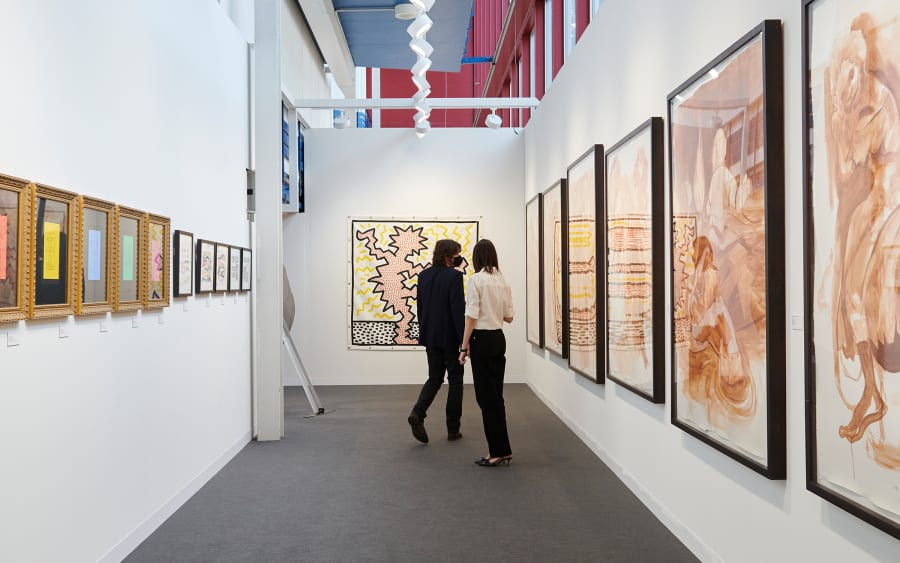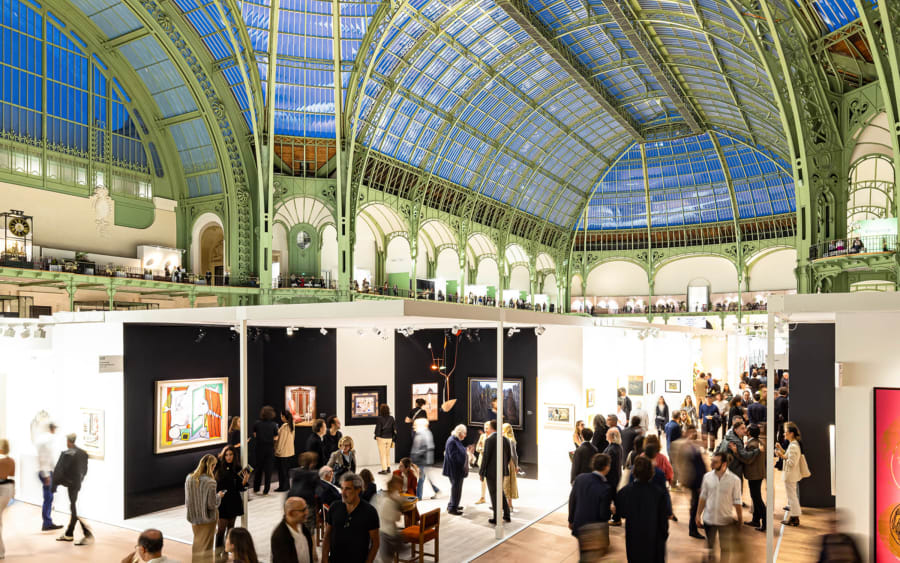There are as many motivations to collect art as people who collect – from building an art-historical legacy to financial investment, hanging out with the art world’s cool kids, and surrounding yourself with images and objects that make your heart sing. Tastes in art also run the gamut and can evolve as collectors mature. At best, an outstanding art collection reflects its owner’s personality and has an aesthetic through-line. But what are the best ways to build one?
A common piece of art-collecting advice is ‘buy what you love.’ But love alone is not enough. Growing a strong collection is more like building a committed long-term relationship: It means reflecting on what your trigger and glimmer points might be, knowing your own aesthetic background, and defining what direction your collection should ultimately go, but always allowing for deviation, surprise, and room to play.
Carola Wiese, a senior advisor on art and collecting at UBS, guides collectors toward great collections using a strategic methodology. Aside from providing holistic advice for seasoned collectors around their curatorial strategy and collection legacy, she regularly works with clients who either have not yet made their first purchase or have just recently embarked on their collecting journey. ‘The first step is a personal encounter,’ she says. ‘We have a longer conversation about the person’s background, how the person has been brought up, if the person was exposed to art or not, or what really had an impact on the formation of an interest in art.’
Then come questions about cultural background, or even a favorite museum visit in childhood – or much later. All of these factors impact preferences, and are important in what Wiese calls a collector’s ‘visual archeology.’ ‘Something that I always, always recommend is to make sure that you understand how you’d like to live with your art,’ says Wiese, noting that lately, many younger Asian art collectors know from the start that they will not be living at home with their art but will lend or otherwise show their pieces in art institutions. Many others hang their art in their offices, not their homes.
Later, Wiese conducts one-on-one workshops, so clients understand the art market, its various sales channels, and other nuances. ‘It’s almost like at university, as if you were in a master class with your professor, where we engage in a deeper conversation,’ she explains. ‘You also have to ask yourself, what is important to you if you start collecting? That can be friendships with artists, for instance, or wanting to engage with a cultural institution. Would you like to collect with the zeitgeist – an artist of your time – or focus on a different period? There are different levels of throwing yourself into the art market.
For Paul Ettlinger, a London-based medical doctor who collects art with his partner Raimund Berthold, engaging with the art world’s social side became increasingly important to the couple’s collecting activities. The two are patrons of Hayward and Serpentine Galleries, for example, and are friendly with the artists and gallerists they work with. This conviviality is an add-on to their deep affinity to the 50-odd works, mostly sculptures, by artists such as Alvaro Barrington, Isa Genzken, Charline von Heyl, and Franz West, on view in their home (there are another 300 in storage).
Ettlinger started collecting Modern British pieces when he was in university. Later, the two bought Warhol prints when Berthold was working in New York in the mid-2000s, because they were accessible. Their journey to a more tightly curated collection came later, and they were not averse to asking for help. ‘At first we were not very disciplined,’ laughs Ettlinger. ‘We were like children in a chocolate factory – we just bought what we liked. Then we decided to get an art advisor. You still need to know where you’re going – you must define your philosophy and ethos – but an advisor makes things easier.’ Ettlinger also notes the importance of identifying others who might share your vision: ‘If you find a gallery that you like, and you like the people there, I think it is worthwhile staying with their program,’ he says.
For collectors of newer mediums, the collecting trajectory might look different again. Ryan Zurrer, a Zurich-based entrepreneur who collects primarily digital artworks, came to collecting art through crypto (whereas most digital-art collectors come to crypto through collecting). He was an early buyer of Beeple (aka Michael Winkelmann, whom Zurrer considers a close friend) and was pivotal in the NFT flurry of a few years ago, as digital scarcity, and thus collectibility, first became possible. In such groundbreaking territory, his motivations are less about living with art than about canonizing digital art by finding, as he says, ‘truly iconic pieces’ that can be exhibited to broader publics in art institutions and beyond.
Zurrer’s collecting activities outside the established channels attracted artworlders to him, not the other way around, and a few veterans have since taught him not only how to refine his eye but also how the art ecosystem (still) works. ‘One of the heuristics of collecting I’ve identified is having mentors – mine have been Hans Ulrich Obrist, Carolyn Christov-Bakargiev, and Uli Sigg,’ he explains, telling me he now owns a few hundred digital pieces and a handful of analog ones. ‘I find the most meaningful collections emerge when there’s a network effect, a curatorial line that links the collection together,’ he explains on a Zoom call from his office, with one of Refik Anadol’s earliest works morphing on a screen behind him, and smaller piece by Beeple on a shelf. ‘’Looking for iconic art that evolves and updates is what guides our activities. The world and our lives evolve so quickly now, why shouldn’t our art?”
As collectors become more experienced and the art world marches on, tastes can change. Wiese calls the earliest artworks a collector might buy ‘learning pieces’ – which a collector may decide to part with as their eye develops. Even so, an initial purchase should be an artwork a collector would never want to part with: ‘You should really be excited about having [the first work you buy],’ she says. ‘I always joke that you should be able to brush your teeth in front of it.’ Collections can also follow individual artists as their practices deepen: Ettlinger and Berthold are currently looking at ‘consolidating’ their collection – which means buying additional works by artists they already own. They currently have a room at home containing eight Sarah Lucas pieces, and are on the lookout for more, to cite one example.
And although some collectors put investment potential high on the list of collection-building criteria, ‘I’m still a firm believer in that you should really not look at art as financial investment,’ says Wiese. ‘It’s a cultural investment. It’s a long-term commitment to something that might, over time, be a culturally acknowledged asset, but primarily it’s a passion asset.’ This brings us back to the notion of love – underscoring any initial infatuation with a work, and then the depth that can come with intention and time. Collectors should always sense a certain passion for the art objects and images they bring into their lives. ‘You have to go into collecting with your heart – but also use your view, and your mind,’ says Ettlinger. ‘Art transcends everything. It brings people together, in this divisive world, when everyone has a passion about it.’
Kimberly Bradley is a writer, editor, and educator based in Berlin. She is a commissioning editor at Art Basel Stories.
Caption for top image: View of Tincuta Marin's work presented by Galeria Plan B at Art Basel Hong Kong 2025.
Published on June 2, 2025.


